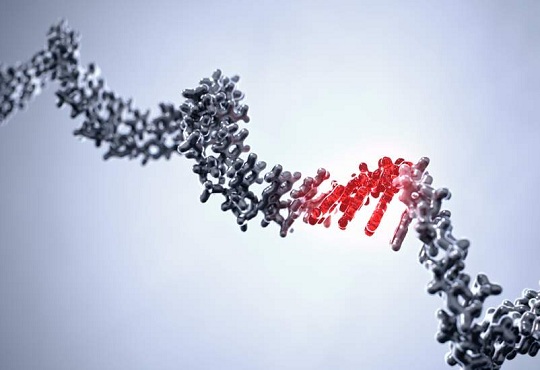
mRNA Technology to Shape the Future of Vaccines
Janifha Evangeline | Tuesday, 08 June 2021, 03:49 IST

mRNA - the tiny, immensely powerful molecule is being used in the manufacturing of medicines, which is a different approach than treating disease with other drug classes. mRNA is the new buzzword that everyone has heard a lot about, recently owing to the development of the mRNA vaccines that are used to trigger the immune system to produce protective antibodies – these Messenger RNA vaccines are some of the first COVID-19 vaccines authorized for use in the US.
While mRNA is the set of instructions by which cells make all proteins and send them to various parts of the body, it plays a fundamental role in human biology. mRNA medicines turn to good use of normal biological processes in order to express proteins and create a desired therapeutic effect. Therefore, this helps in the potential treatment of a broad spectrum of diseases while most of these cannot be addressed with the current technologies.
While mRNA is the set of instructions by which cells make all proteins and send them to various parts of the body, it plays a fundamental role in human biology. mRNA medicines turn to good use of normal biological processes in order to express proteins and create a desired therapeutic effect. Therefore, this helps in the potential treatment of a broad spectrum of diseases while most of these cannot be addressed with the current technologies.
Discovery, development, and manufacturing
What is phenomenal about mRNA is its potentiality to transform how medicines are discovered, developed, and manufactured. mRNA helps in the transformation at a breadth, speed, and scale which is not common in the industry.
mRNA medicines are neither small molecules such as traditional pharmaceuticals nor traditional biologics which are the genesis of the biotech industry. Rather, they are sets of instructions that direct cells in the body to make proteins to prevent or fight disease. However, the potential use of RNA molecules goes beyond the use in a vaccine.
While RNAs are some of the most significant molecules for life on planet earth, Ribonucleic acid is not only found in every cell in the body but also plays an important role in the flow of genetic information.
“Messenger” RNAs carry out the task of copying and carrying the genetic instructions from the DNA to the protein-making factories of the human cells – ribosomes. This can create the biological components and machinery they need to work, for example, the actin proteins that give cells their shape and structure are crucial to muscle contraction.
While Ribonucleic acid helps other biomolecules in finding each other and brings other proteins and Ribonucleic acids together, these functions are crucial in managing the many levels of gene regulation and are necessary for the proper functioning of the body as well.
Although RNA has a simple molecular sequence that can easily be read by researchers, its wide range of capabilities has made it an extremely useful tool in the development of recent biomedical technologies.
Some of the fields where RNA is being investigated include Vaccines and Diagnostic technologies:
Vaccines
The mRNA vaccines used against SARS-CoV-2 are the first of their kind which is to be licensed for widespread human use, however, Ribonucleic acid studies and clinical trials on vaccines for other vaccines – and even cancers – have been going on for almost a decade. Also, these kinds of vaccines introduce a specific type of Ribonucleic acid sequence into the human body that results in the body’s ribosomes temporarily express a specific, harmless viral protein after which the foreign acid Ribonucleic molecules are degraded. In turn, what happens is this process trains the immune system to respond in such a manner that it produces strong protection against this virus the next time it encounters it.
This is far from conventional vaccines that need either a harmless, inactive form of a virus or a small protein fragment/protein made by a virus, in order to train the immune system. Not just that, designing and synthesizing a Ribonucleic acid sequence, which gives the body instructions is also easily and quickly done.
However, one of the biggest obstacles in developing effective RNA-based drugs has been the relative instability of the molecules as these degrade rapidly when exposed to certain common enzymes and chemicals, so need to be kept at very low temperatures, which is below 70 degree Celsius in some cases.
India’s first indigenous mRNA vaccine candidate that was developed by one of the Pune headquartered biotechnology companies obtained approval from drug regulators last year in the month of December to initiate Phase ½ human clinical trials.
mRNA vaccines are not using the conventional model to produce an immune response. They rather carry molecular instructions to make the protein in the body with the help of a synthetic RNA of the virus. Furthermore, the host body uses this for producing the viral protein, which is recognized in making the body prepare an immune response that fights against the disease.
“The mRNA-based vaccines are scientifically the ideal choice to address a pandemic because of their rapid developmental timeline,” the Department of Biotechnology said.
Also, it is considered safe since it is not only non-infectious and non-integrating but is degraded by standard cellular mechanisms.
“They are expected to be highly efficacious because of their inherent capability of being translatable into the protein structure inside the cell cytoplasm. Additionally, mRNA vaccines are fully synthetic and do not require a host for growth, for example, eggs or bacteria. Therefore, they can be quickly manufactured inexpensively under cGMP conditions to ensure their availability and accessibility for mass vaccination on a sustainable basis,” the DBT stated talking about mRNA vaccines.
Diagnostic technologies
It is found that RNA is also playing a significant role in diagnostics. One such instance is where research about liquid biopsies which only need a sample of human body fluids such as blood have discovered that many diseases can be diagnosed at an earlier stage by measuring levels of particular RNAs and these include cancers, neurodegenerative and cardiovascular disease.
Further, in order to make it easier and less invasive for collecting samples, RNA biomarkers have additional advantages over tissue biopsies. And, other more invasive, collection methods include skin, organ/bone biopsies since these are not only less painful but also carry fewer risks.
Lastly, the combinations of RNA biomarkers can also be simultaneously evaluated. This allows not more confidence in a diagnosis and predictions of disease progression and prognosis. Also, large-scale studies which test the clinical suitability of the aforementioned types of diagnostic tools are required.
However, there are fantastic fortunes to be made in mRNA technology since Messenger RNA has an incredible future.
CIO Viewpoint
Integrating New Technologies to Optimize...
By Abhrasnata Das
Quantum Shift in Healthcare Driven by...
By Abhrasnata Das
Product Adoption: Realizing The Real Value
By Ashish Pandey, CIO, GSK Consumer Healthcare India
CXO Insights
HIT Promotional Products: Fostering Empowerment...
By Eric Shonebarger, President & Lori Thibado, Director of Order Entry & Art
Addressing the Data Management Challenges in...
By Richa Singh
Elevating Patient Experience with Remote...


















